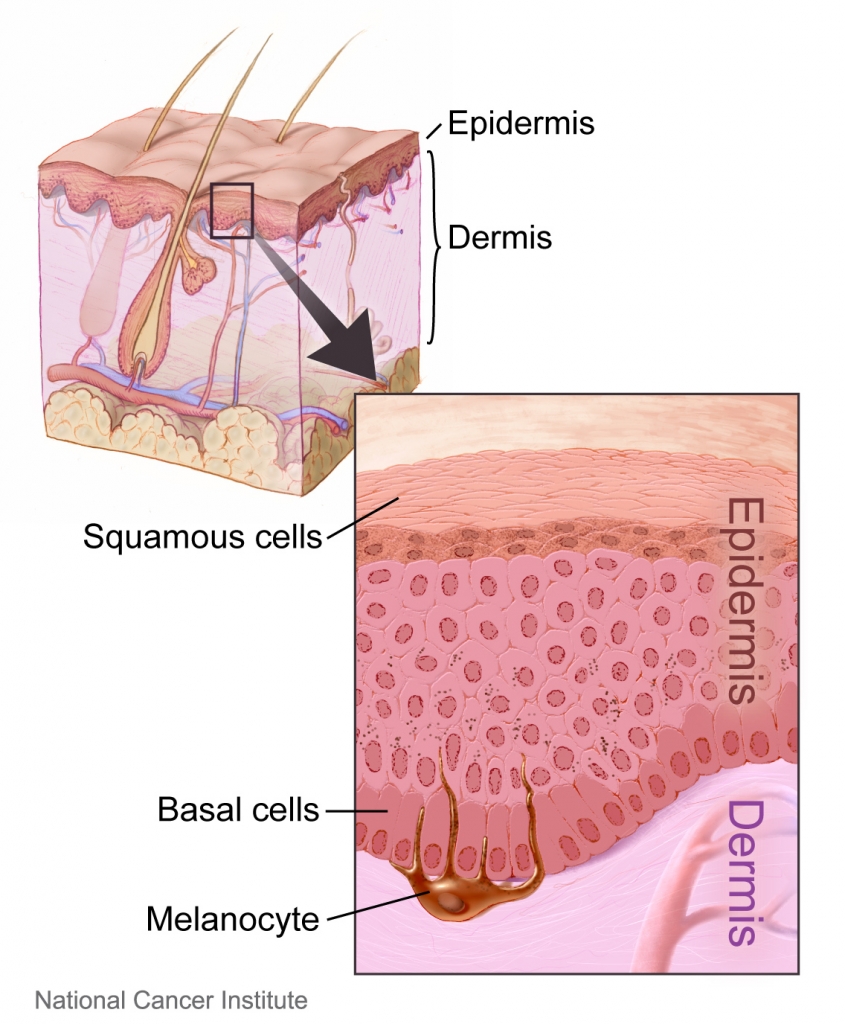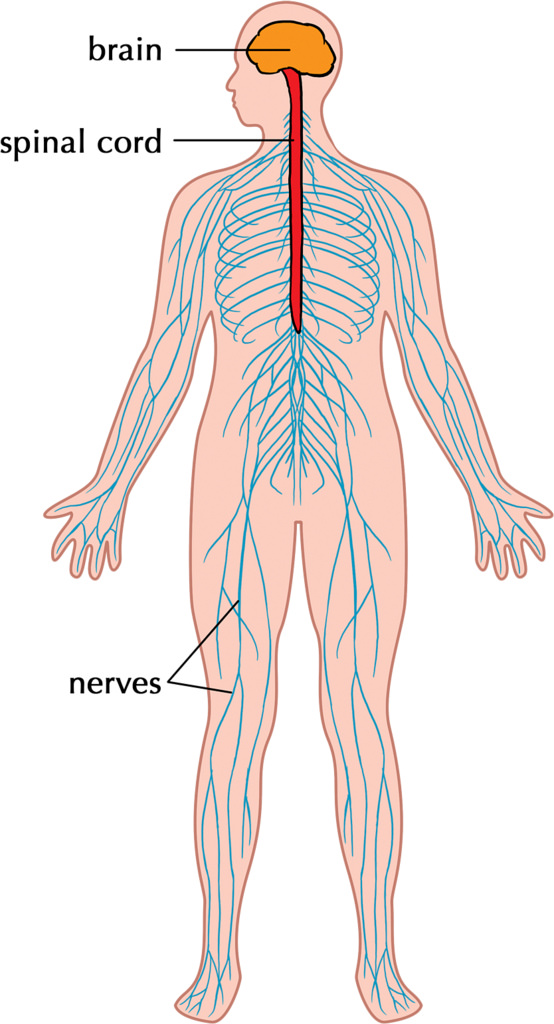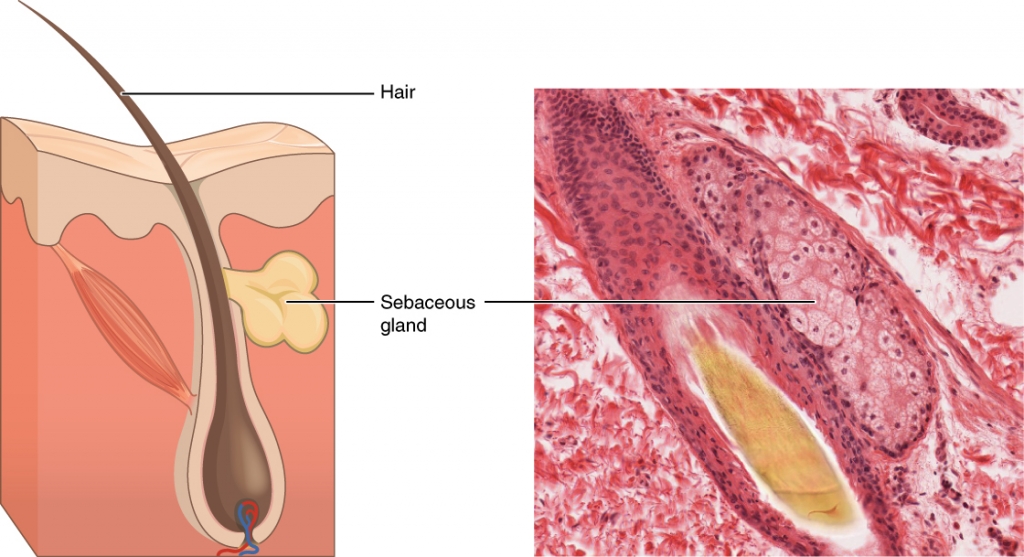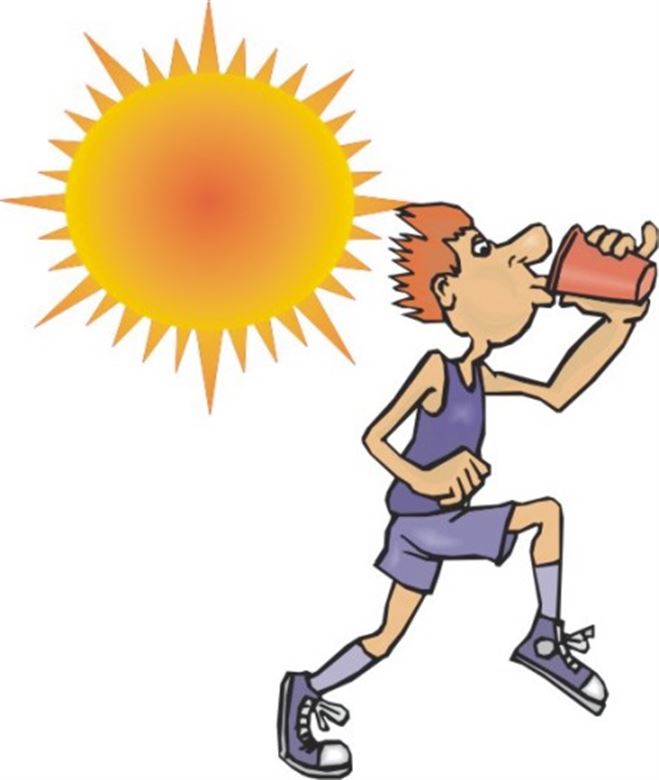Skin Facts
Skin is an organ you probably don’t think about much, but it’s extremely important.
It protects and covers the muscles, bones, and other organs and holds them together.
It also keeps our bodies at the right temperature, protects our bodies from harm, and gives us the sense of touch.
Layers of the Skin
Your skin is made up of three layers: the epidermis, dermis, and subcutaneous fat. Let’s take a look at each layer.
Epidermis
The epidermis is the part of the skin that you can see. It’s thin in some places (like your eyelids) but thicker in other places (like the bottom of your feet).
This layer of skin is responsible for making new skin cells, giving skin its color, and protecting your body.
New skin cells form at the bottom of the epidermis, and they take about 2 weeks to a month to move to the top.
During this time, older cells on the top die and rise to the surface of your skin, where they eventually flake off.
Even though we don’t notice it, we lose about 30,000-40,000 dead skin cells every minute.
This is why 95% of the cells in your epidermis are busy making new skin cells.
The other 5% produce a substance called melanin. Melanin gives skin its color, so the more melanin you have, the darker your skin is.
These cells also protect your skin by producing extra melanin to protect you from the rays of the sun.
Dermis
The dermis is beneath the epidermis and contains nerve endings, blood vessels, oil glands, and sweat glands.
Nerve endings work with your nervous system to send messages to the brain about what you touch and feel.
For instance, your nerve endings might alert the brain that a surface feels hot. Using this information, the brain sends a message telling you to move your hand.
The tiny blood vessels in your dermis bring oxygen and nutrients to your skin cells to keep them healthy. They also take away waste from the skin cells.
Oil glands, also called sebaceous glands, produce a natural oil called sebum.
Sebum rises to the top of your epidermis to keep your skin soft and smooth and protect it from damage.
It also makes your skin waterproof, so that it doesn’t absorb water and get soggy.
The sweat glands produce a tiny bit of sweat at all times, which you probably don’t feel. The sweat rises through pores, tiny holes in the skin.
Sebum and sweat combine to create a protective fluid.
Subcutaneous Fat
The bottom layer is subcutaneous fat. As you might guess, it’s made up mostly of fat.
It helps keep your body warm and absorbs shocks, like if you bump into something hard or fall down.
Hair follicles have their roots in the subcutaneous layer, and they rise up through the dermis.
In the dermis layer, each follicle is connected to a sebaceous gland that releases sebum onto the hair, making it shiny and waterproof.
Skin and Temperature
The blood vessels, sweat glands, and hair in your skin work together to keep your body at the right temperature.
Your brain has an inner thermometer called the hypothalamus that sends messages to your skin when you’re getting too hot or too cold.
When you’re feeling hot, blood vessels bring warm blood closer to the surface of your skin to release heat.
Has your face ever gotten red when you’re running around outside? That’s your body trying to cool you down!
Sweat is another way that your body cools you down.
When you get cold, the blood vessels narrow as much as possible to keep warm blood away from the surface of your skin.
This causes tiny muscles called the erector pili to pull on your hair and make them stand up very straight.
You’ll notice tiny bumps on your skin, which you probably call goosebumps!
So even though we don’t give our skin much thought, it’s always hard at work protecting us and keeping us comfortable.





